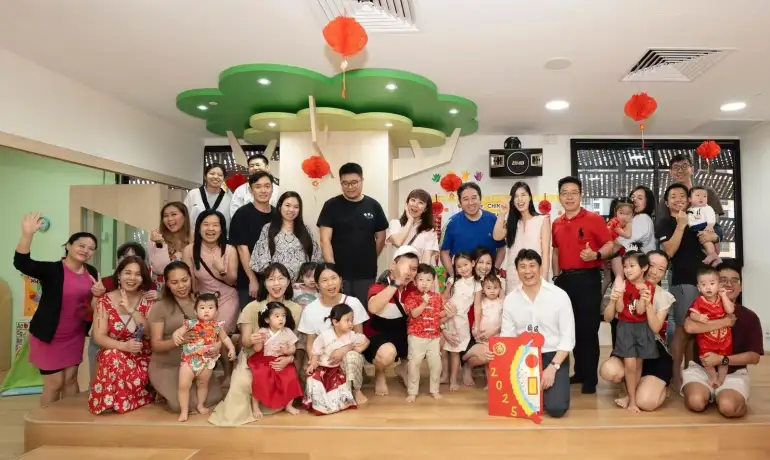What is Child Care Subsidy and Why It Matters
Raising a child is incredibly rewarding—but also expensive, especially in Singapore. That’s where a child care subsidy becomes a crucial helping hand. Simply put, it’s government support to reduce monthly preschool and infant care fees for families.
Managed by the Early Childhood Development Agency (ECDA), subsidies lower the out-of-pocket costs for working parents, ensuring more children can access quality early education. Beyond just saving money, these subsidies allow parents to stay in the workforce while giving their kids a head start in learning and development.
Beyond Low-Income: How Subsidies Help (and Fail) Middle-Income Families
While most people assume subsidies are only for low-income households, middle-income families often struggle too. Earning “just enough” to disqualify them from additional help, but still feeling the financial pinch of rising child care costs.
For example, a typical dual-income family may still pay $800 per child monthly even after subsidies. These families fall into the “sandwiched” group, juggling housing loans, eldercare, and living expenses. More flexible, sliding-scale subsidies could make a real difference here.
The Hidden Costs Child Care Subsidies Don’t Cover
Subsidies help with tuition, but families still face hidden costs:
- Uniforms, school bags, and learning kits.
- Optional enrichment classes like music or speech & drama.
- Field trips and event participation fees.
- Transport arrangements and daily commute costs.
- One-off charges like photo packages or graduation outfits.
These extras often catch parents by surprise, adding to the overall financial burden.
Employers as Part of the Solution
While subsidies are government-driven, employers also play a vital role in supporting working parents. Flexible work hours, remote options, and partnerships with childcare centres can complement subsidies.
Some companies offer childcare stipends or on-site facilities, easing parents’ daily logistics. In return, employers benefit from higher staff retention and improved work-life balance for their teams.
Real Stories: How Families Experience Child Care Subsidies
For the Lim family, basic subsidies help—but hidden costs still stretch their budget. Single parents like Sarah rely heavily on additional subsidies to afford reliable child care. Freelancers like Kelvin face challenges with eligibility due to non-traditional employment.
Their experiences highlight that while subsidies are essential, gaps remain, especially for middle-income and non-salaried families.
Step-by-Step: How to Apply for Child Care Subsidies in Singapore
- Check Eligibility – Singapore citizen child, enrolled in licensed centres, with working parents (56 hours/month minimum).
- Prepare Documents – NRIC, birth certificate, income proof.
- Centre Applies for You – The childcare centre submits the application.
- Approval & Deduction – Approved subsidies are automatically deducted from fees.
- Review Annually – Update your information if there are income or status changes.
Full details are available on the ECDA official site.

Long-Term Impact: More Than Just Financial Aid
Subsidies are not just about saving money. They:
- Provide access to structured early education.
- Support parents’ mental health and workforce participation.
- Enhance social mobility for families.
- Strengthen community resilience and national productivity.
Over time, this investment benefits both families and society.
Lesser-Known Subsidies & Special Support You Should Know
Beyond basic subsidies, there are:
- Additional Subsidies for lower-income families.
- Support for children with special needs through inclusive programmes.
- Transitional subsidies for parents seeking employment.
- Enhanced infant care subsidies for younger children.
- Benefits under POP and AOP schemes that keep fees lower at selected centres.
Frequently Asked Questions (FAQ)
What’s the difference between basic and additional child care subsidy?
The basic subsidy applies to all Singapore Citizen children in licensed child care centres. The additional subsidy is means-tested, offering more support to lower and middle-income working families based on per capita income.
Can self-employed or freelance parents apply for child care subsidy?
Yes, they can. Self-employed parents must provide proof of work, such as their Notice of Assessment (NOA) or other documentation verifying they work at least 56 hours per month.
Do subsidies apply to all child care centres?
No. Subsidies are only applicable to centres licensed by the Early Childhood Development Agency (ECDA). Always confirm the centre’s licensing status before enrolling.
Are infant care subsidies different from child care subsidies?
Yes. Infant care subsidies generally offer higher financial support due to the more intensive care required for younger children (aged 2 to 18 months). The application process is similar.
Can unemployed parents apply for child care subsidies?
Eligibility requires parents to work at least 56 hours per month. However, transitional subsidies are available for parents actively seeking employment, ensuring children can continue attending childcare.
Looking for a Child Care Centre That Supports You?
At Little Unicorn Preschool, we combine nurturing care, flexible programmes, and accessible fees to support Singapore families. As a subsidy-friendly centre, we’re here to make early education joyful and affordable.
👉 Book a visit now and see how we can support your child’s learning journey.



